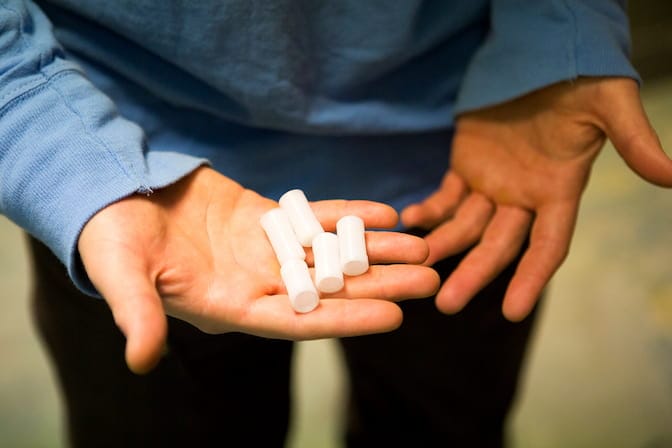
Neutron signatures can help safeguard thorium reactors
Researchers develop novel tools to account for nuclear materials.

Researchers develop novel tools to account for nuclear materials.
In advanced nuclear reactors, the thorium fuel cycle is an emerging alternative to traditional nuclear fuel cycles that can more readily produce weapons-grade material, but new monitoring techniques are needed to ensure peaceful use.

Advancing nuclear energy
from discovery to deployment
University of Michigan researchers have developed techniques to non-destructively identify and quantify uranium-233, the fissile isotope produced in thorium reactors that is difficult to detect with conventional tools that target a different isotope—uranium-235. Their work was published in Physical Review Applied in December 2023.
“The main challenge we are trying to address with this research is a matter of accountancy,” said Oskar Searfus, a Ph.D. student in nuclear engineering and radiological sciences and first author of the paper. “(T)he three measurements in my research help to determine the U-233 content of an unknown sample of uranium.”
Working in the lab of Igor Jovanovic, professor of nuclear engineering and radiological sciences, Searfus demonstrated techniques to detect three neutron signatures of U-233 that have the potential to lead to thorium reactor safeguard measures for the International Atomic Energy Agency.
Read about the neutron signatures Searfus demonstrated in the article Oskar Searfus pioneers neutron signatures to safeguard thorium reactors by Sara Norman.
Nicole Casal Moore
Communications & Public Engagement Director